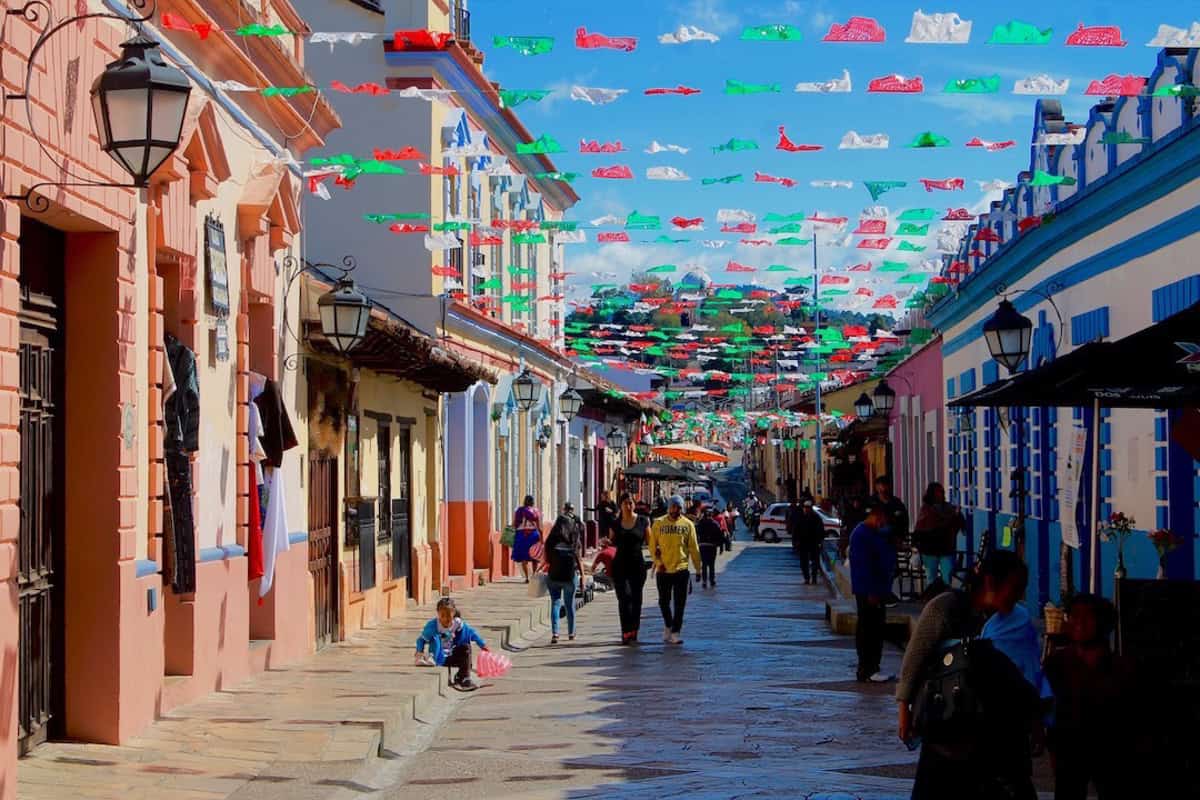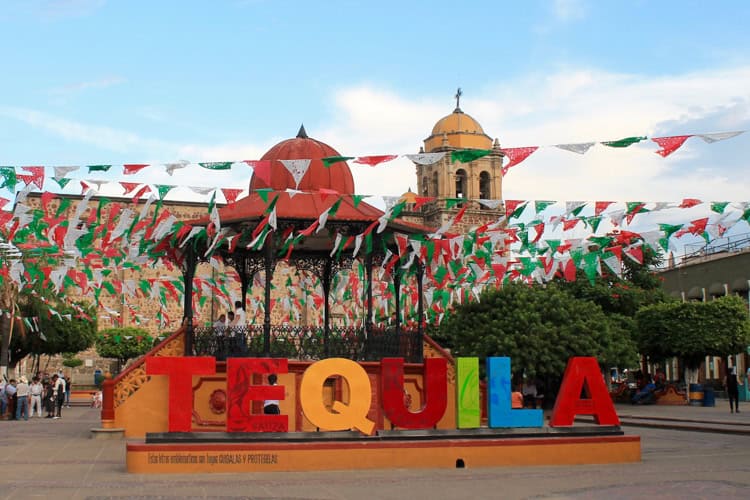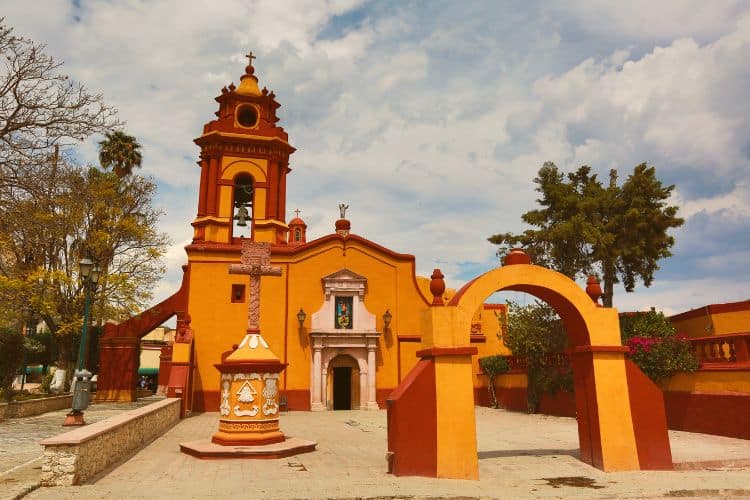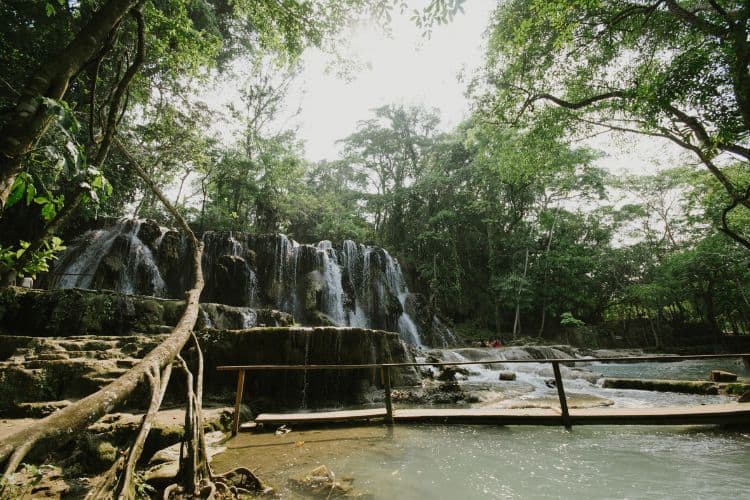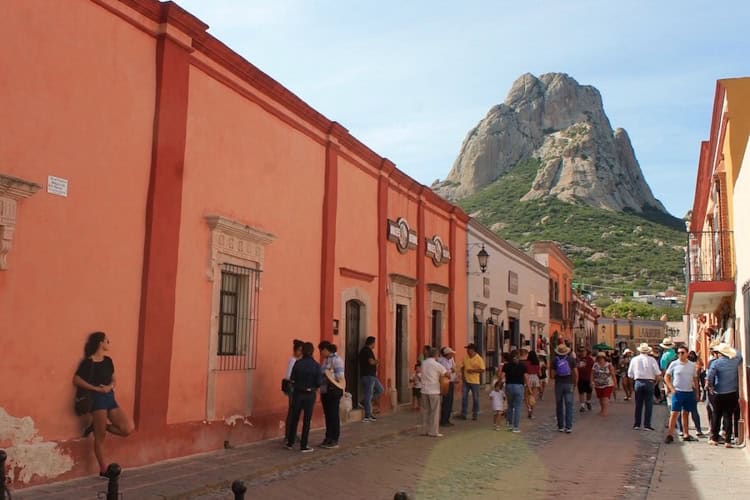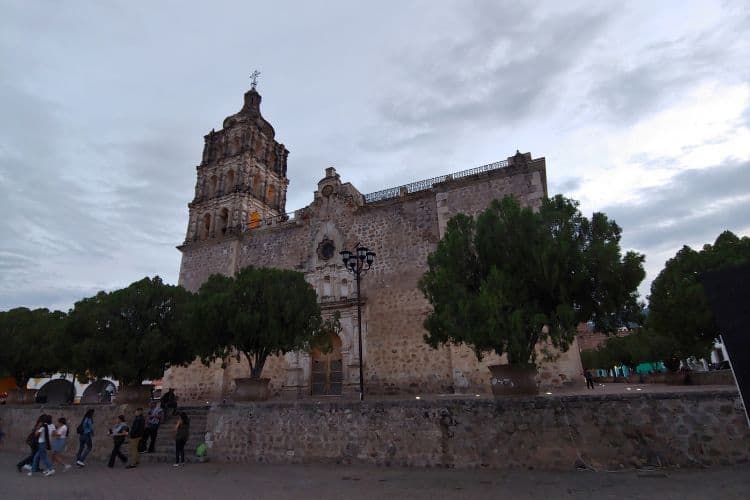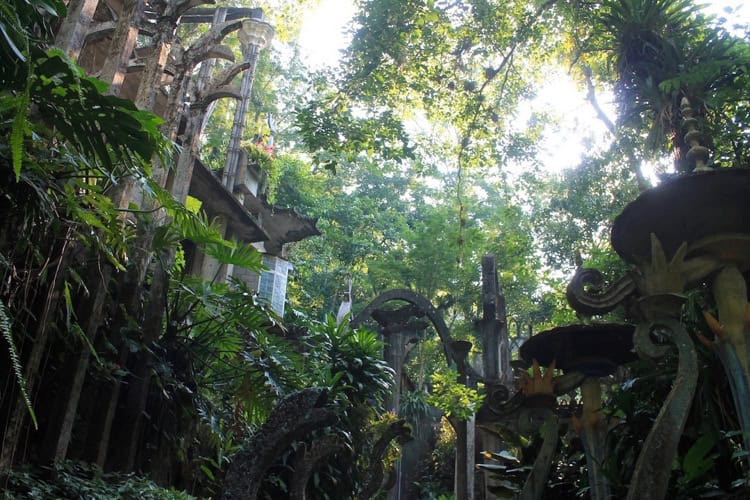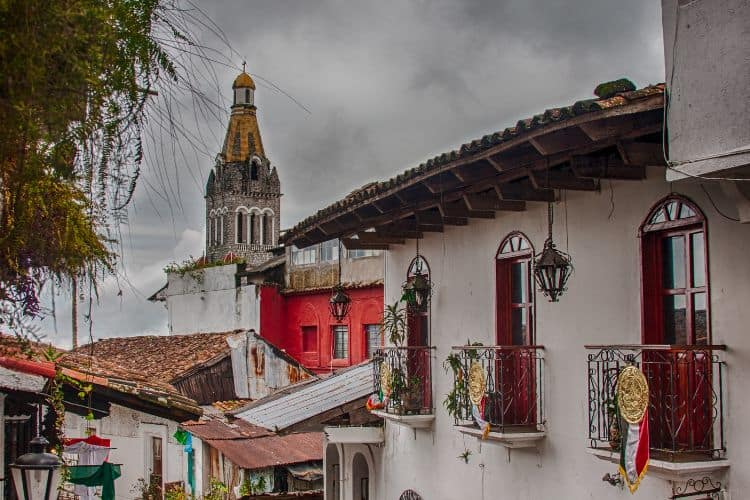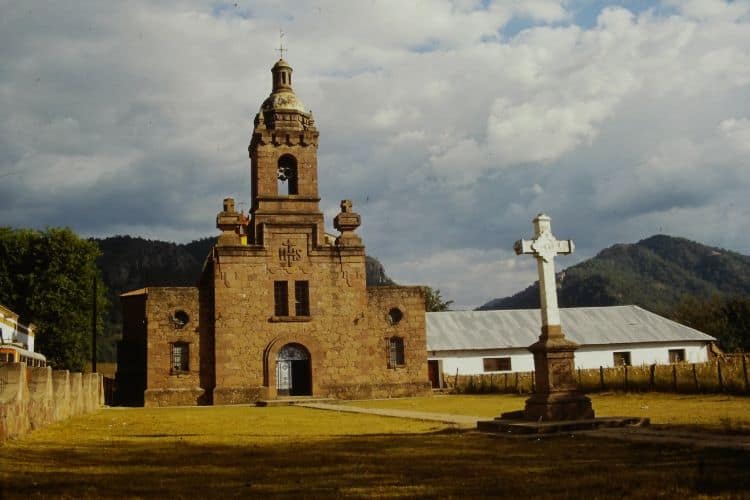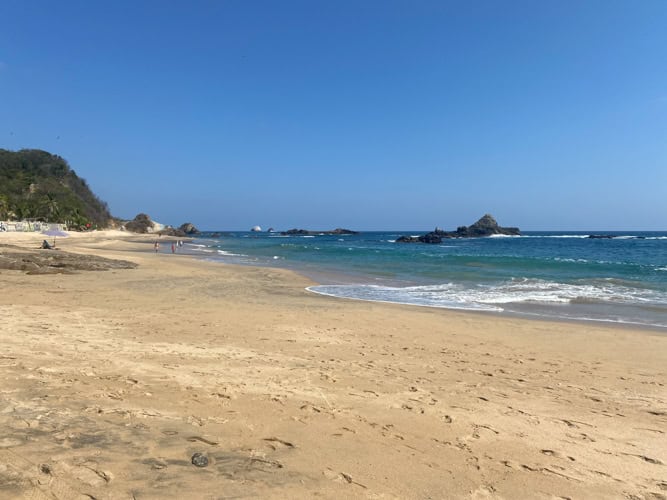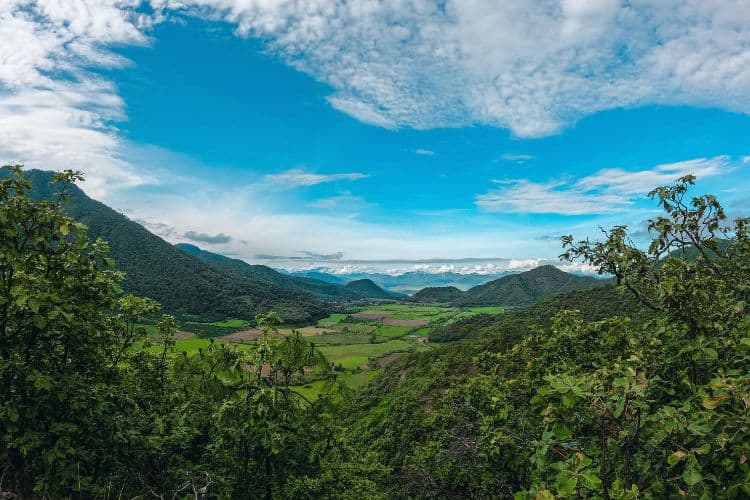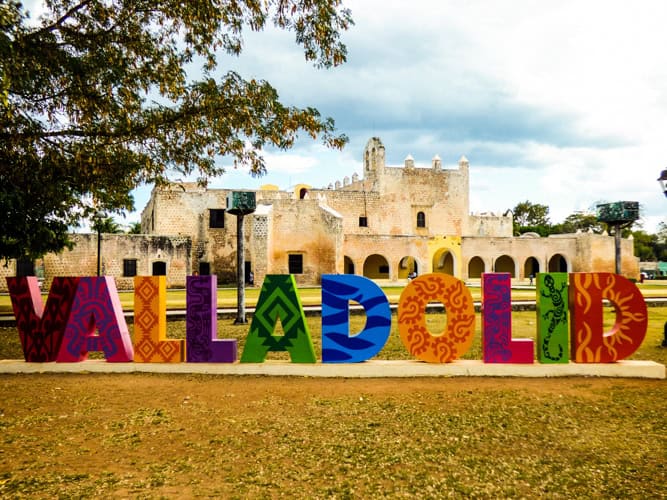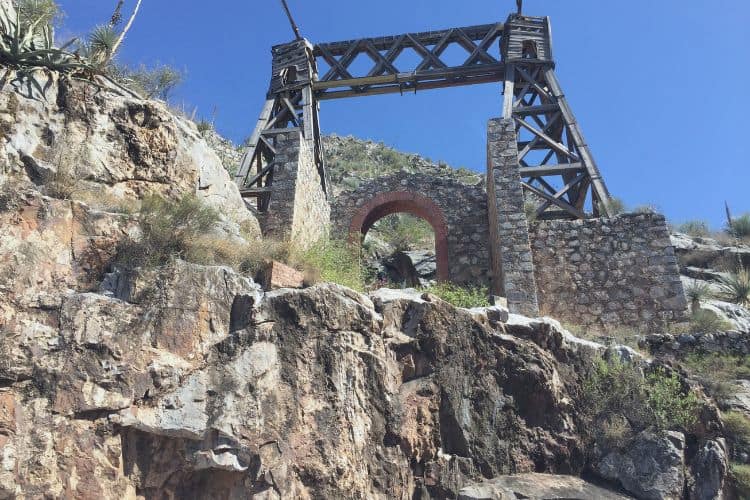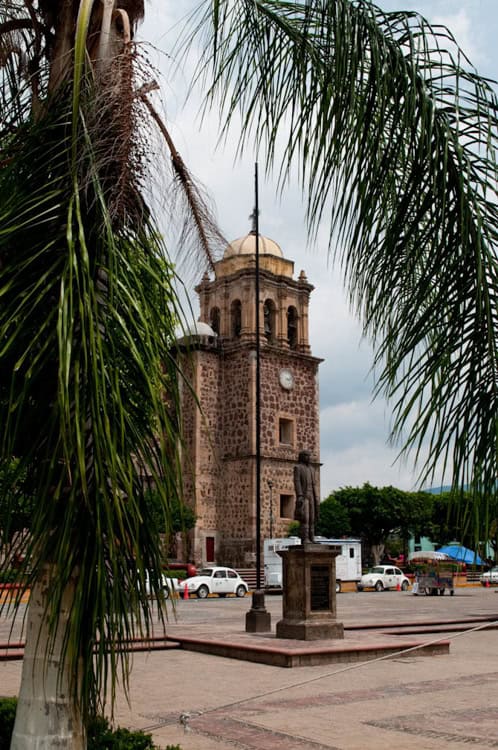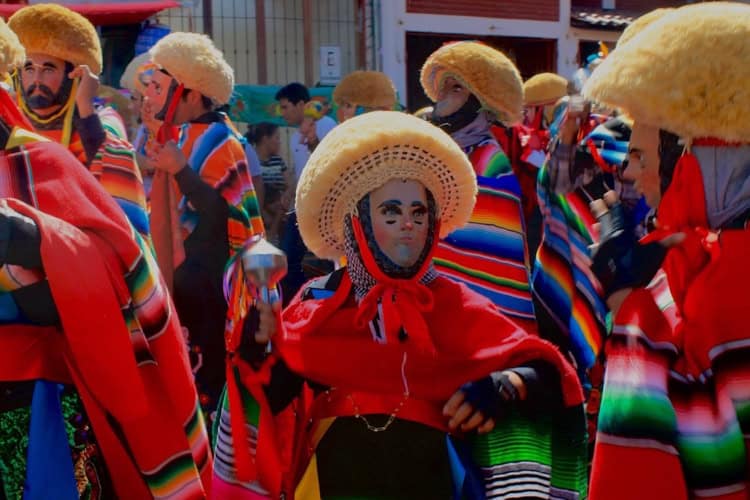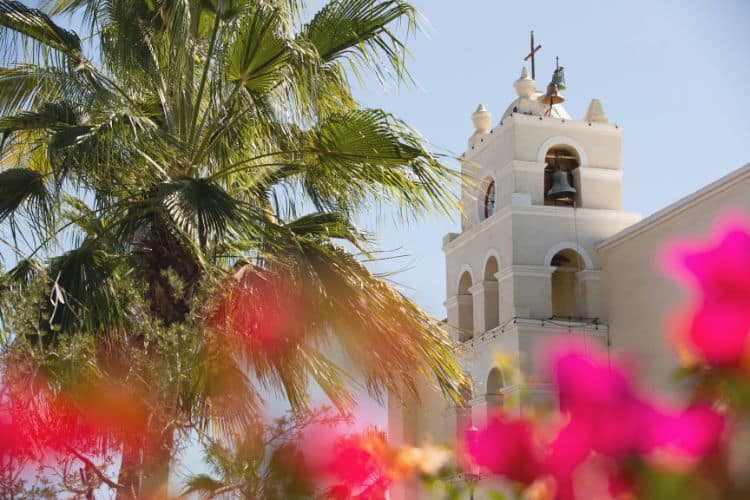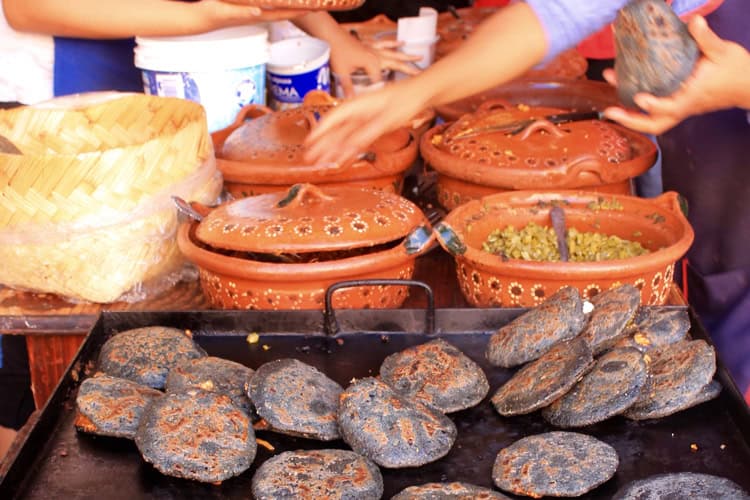The Pueblos Magicos of Mexico was one of the best discoveries we made during our year exploring Mexico. It led us to uncover many tiny towns we may never have heard of otherwise. We wish more places would adopt this idea, shining a light on lesser-known gems off the tourist trail.
The Pueblos Magicos are towns and villages throughout Mexico that have been designated “Magical Towns” due to some special feature, be it cultural heritage, historical significance, or natural beauty.
Some are picked for specific traditions, others for their unique cultural experiences, or for the diverse landscapes that define Mexico. While some Pueblos Magicos are well-known, many remain under the radar and less frequented.
These underrated Pueblos Magicos are often overshadowed by crowd favorites like Tulum, but by venturing a little further off the beaten path, travelers can discover authentic Mexico steeped in tradition, folklore, and natural wonder.
What are Pueblo Magicos?
The Pueblo Magicos program was established by Mexico’s tourism body in 2001 with the goal of recognizing and promoting towns that offer visitors a unique and magical experience. These towns are selected for their historical significance, architectural beauty, local customs, natural wonders, and cultural richness.
The initiative not only aims to boost tourism but also to foster community development while preserving and promoting the cultural and historical heritage of these areas.
The program encourages domestic and international tourism, providing alternatives to the more commercialized tourist destinations. Each year, more and more towns are awarded the distinction of Pueblo Magico. As of now, there are over 170 Pueblos Magicos across Mexico, each offering a distinct glimpse into the country’s multifaceted culture and history.
However, since its inception, some Pueblos Magicos have become victims of their own popularity, experiencing issues like overcrowding, environmental degradation, and loss of character due to commercialization. These developments have sparked debates on the need for sustainable tourism practices that can preserve the town’s authenticity and well-being while still welcoming visitors.
In our experience, the most popular Pueblo Magicos have started to lose a bit of their shine, hot spots like Sayulita have become way too crowded and over-commercialized. Meanwhile, many underrated towns have retained their unique character and charm.
Criteria for Selection in This List
In curating this list of underrated Pueblos Magicos, we’ve aimed to showcase those towns that, despite their exceptional charm and cultural wealth, have remained relatively under the radar. Or, if they have become well known, have managed to retain the essence of what made them magic to begin with. These criteria include:
Tourism: We gave preference to less frequented towns. These places are often overlooked in favor of more famous destinations but are no less rich in beauty and tradition.
Cultural Significance: We included some towns based on their history and cultural heritage, representing the diverse cultures of Mexico’s past and present. We were especially drawn to those with unique traditions, festivals, culinary experiences, and artisan crafts, such as Chiapa de Corzo.
Natural Beauty: Many of these towns boast stunning natural landscapes, from serene beaches and lush forests to rugged mountains and desert expanses. Their natural settings play a crucial role in their appeal, providing a backdrop for outdoor activities and nature exploration.
Preservation of Character: The selected towns have managed to preserve their authenticity and local character amidst the pressures of modernization, commercialization, and tourism. They continue to offer a genuine glimpse into the life and traditions of the places and their people.
These Pueblos Magicos offer not only a break from the usual tourist trail but also a deeper connection with Mexico’s cultural and natural heritage.
Tapijulapa, Tabasco
Tapijulapa, a charming village set amongst the lush greenery of Tabasco’s mountains, allows visitors to connect with a slower pace of life. This village’s history is deeply rooted in the cocoa production and river commerce that once thrived in the area, with well-preserved architecture and cobblestone streets that connect Tapijulapa to its colonial past.
Main Attractions and Activities
Visitors can admire the local architecture, including the Santo Domingo de Guzmán church, an emblematic white and red structure that dominates the town’s landscape. Tapijulapa is a gateway to outdoor adventures in the surrounding Sierra region.
Take a boat trip to the impressive waterfalls, caves, and pools of Villaluz. You can hike, rappel, climb, or zipline through the forest or take a guided nature tour offering insights into the local ecosystem and cultural heritage.
Cultural Aspects
Tapijulapa is famous for its intricate hand-woven wicker baskets and furniture made from rattan and palm, which showcase the artisanal skills that have been passed down through generations.
Unique festivals represent the convergence of indigenous ceremonies and the Christian calendar. The most notable being the Danza de la Pesca Sardinas, commemorating the Zoque tradition of fishing for blind cave sardines on Palm Sunday.
The local cuisine, influenced by the town’s riverine and forested surroundings, offers unique flavors with dishes like river shrimp, alligator fish, and iguana, as well as locally grown fruits like soursop, passionfruit, and the fiery habanero.
San Sebastián Bernal, Querétaro
More commonly known simply as Bernal, this charming town is located in the shadow of a towering monolith in the vibrant state of Querétaro. Renowned for its imposing natural landmark, the Peña de Bernal, one of the world’s largest monoliths, the small village at the base of the rock is steeped in history that blends its indigenous roots with colonial charm.
Bernal is a significant site for both cultural preservation and spiritual significance, drawing visitors for its natural beauty and mystical allure. While Bernal may already be a mainstay for tourists day-tripping from San Miguel de Allende or Santiago de Querétaro, we are keeping it on this list because it has retained so much of what makes it special.
Main Attractions and Activities
The Peña de Bernal is a popular destination for rock climbing and hiking enthusiasts, with different routes to the summit offering varying levels of difficulty. The views from the top are breathtaking, offering panoramic vistas of the surrounding Bajío region.
The town itself features cobblestone streets and colonial architecture, with the San Sebastián Church being a notable historical site. Bernal also hosts various cultural events, including the Equinox Festival, where people gather to celebrate and absorb the supposed cosmic energy radiated by the monolith.
Cultural Aspects
Bernal’s culture is influenced by its Otomí heritage, with many local traditions and crafts reflecting this indigenous influence. The town is known for its artisanal products, particularly the loom-made wool textiles. Bernal also offers unique local flavors with dishes such as gorditas negras, corn cakes made from black corn stuffed with a variety of fillings. The blend of indigenous practices and Spanish colonial influence is evident in every aspect of life in Bernal, from its architecture to its festivals, making it a vibrant cultural hub in central Mexico.
Alamos, Sonora
Álamos, Sonora, is a colonial gem that dates back to the late 17th century, often referred to as the “City of Silver” due to its rich mining history. The town’s wealth from silver mining led to the construction of beautiful colonial mansions and churches, which have been meticulously preserved, giving Álamos a timeless feel.
Main Attractions and Activities
Visitors to Álamos can explore its colonial, and historical landmarks like the Church of La Purisima Concepcion and the Plaza de Armas. The town is also the gateway to the Sierra de Álamos, a region of exceptional biodiversity, offering opportunities for bird watching, hiking, and encountering the diverse flora and fauna of northern Mexico. The Museo Costumbrista de Sonora in Álamos provides insights into the region’s history and culture.
Cultural Aspects
One of the most important celebrations on the calendar here the Alfonso Ortiz Tirado Festival (FAOT), which celebrates music and the arts, brings performers and spectators from around the world.
Xilitla, San Luis Potosí
Located in the mountainous Huasteca region of San Luis Potosí, Xilitla is a surreal escape known for its lush landscapes and unique artistic heritage. The town’s history is intertwined with agriculture, but it has become a cultural icon due to the influence of Edward James, a British artist who chose Xilitla as the site for his fantastical garden, Las Pozas.
Main Attractions and Activities
The crown jewel of Xilitla is Las Pozas, a surrealistic garden filled with massive concrete sculptures, whimsical buildings, and winding staircases that lead to nowhere, all set amidst a backdrop of cascading waterfalls and tropical vegetation.
Apart from this artistic wonder, Xilitla offers natural attractions like the Xilitla caves and the nearby Sierra Gorda biosphere, ideal for eco-tourism activities such as hiking and bird watching.
Cultural Aspects
Xilitla’s local culture is interwoven with indigenous and mestizo traditions, reflected in its music, dance, and festivals. The town hosts lively celebrations, including a local take on the Day of the Dead festivities known as Xantolo. The local cuisine features a mix of indigenous and Spanish influences, with local specialty dishes like zacahuil (a giant tamale) and bocoles (corn cakes).
Cuetzalan, Puebla
Elevated in the misty mountains of Puebla, Cuetzalan is remarkable for its indigenous heritage, primarily of the Nahua and Totona people, who keep traditions, including language, foods, costumes, and dances, alive here.
Additionally, the colonial past is exhibited here in its cobblestone streets, the Church of St. Francis Assissi, and the traditional white-and-red tiled houses. Cuetzalan’s history is rich with pre-Hispanic roots and Spanish colonial influence, making it a fascinating blend of cultures.
Main Attractions and Activities
The town is famous for its Sunday market, where locals from surrounding villages come to buy and sell handmade crafts, textiles, and traditional foods of central Mexico.
The Yohualichan archaeological site, showcasing ancient Totonac pyramids, is one of the region’s biggest drawcards. Caving and canyoning are also popular here in the waterfalls along the Tecolutla River, and extensive cave networks are nearby.
Cultural Aspects
Cultural traditions in Cuetzalan are deeply preserved, with festivities like the Feria del Huipil y Café, which includes costumed processions and dances and is preceded by a Voladores ritual, where performers climb a 30-meter pole and descend to the ground tied with ropes.
The town’s gastronomy reflects its cultural heritage, featuring Totonac and mestizo dishes such as tlacoyos and a locla liquor called yolixpa.
Batopilas, Chihuahua
Batopilas, is a remote town, founded in the canyons of Chihuahua in the lands of the Tarahamura people. Formerly a thriving silver mining center in the 18th and 19th centuries today, its well-preserved colonial architecture and narrow streets remain to preserve its illustrious history.
Main Attractions and Activities
The journey to Batopilas is an adventure in itself, with winding roads offering breathtaking views of the Copper Canyon. Once in town, visitors can explore remnants of its mining past, including the Hacienda San Miguel and the Lost Cathedral of Satevó, located a few kilometers outside the town.
The surrounding landscape is perfect for hiking, offering trails that lead to ancient cave dwellings and views over the canyon. Taking a guided tour from a Tarahumara guide can offer insight and context into the region.
Cultural Aspects
The culture in Batopilas is a blend of Tarahumara (Rarámuri) indigenous traditions and Spanish influences. Local crafts, such as woven baskets and textiles, reflect the indigenous artistry.
Festivals and ceremonies often involve Rarámuri dances and music, providing a glimpse into the enduring cultural practices of the region. The local cuisine features a mix of indigenous and mestizo flavors, with dishes like gorditas, and tamales being staples.
Mazunte, Oaxaca
Mazunte, located on the coast of Oaxaca, is celebrated for its pristine beaches and commitment to sustainable living. This tranquil village has evolved from a turtle-harvesting community to a hub for ecotourism and conservation efforts.
Main Attractions and Activities
Mazunte is best known for its beautiful beaches and the Mexican Turtle Center, dedicated to the study and conservation of sea turtles. The town is also a center for yoga and meditation retreats, attracting visitors seeking relaxation and natural beauty.
Cultural Aspects
The town’s culture is focused on environmental conservation and sustainable practices. Annual events like the Mazunte Jazz Festival highlight its vibrant arts scene, while local cuisine features seafood and organic produce, reflective of its coastal and eco-friendly ethos.
Mascota, Jalisco
Mascota, two hours from Puerto Vallarta in the Sierra Madre Occidental mountains of Jalisco, is well off the tourist circuit and offers a tranquil charm with its well-preserved 19th-century architecture and cobblestone streets.
Known as “the Emerald of the Sierra,” this town’s history is rooted in agriculture, particularly in the cultivation of corn and beans, and it played a significant role in the region’s development during the colonial era.
Main Attractions and Activities
The town’s main attractions include the unfinished Temple of the Precious Blood, a ruin from the 19th century that offers a glimpse into Mascota’s past. The Mascota Archaeological Museum provides insights into the region’s pre-Hispanic history.
Nearby, the Juanacatalam Lagoon is an ideal spot for picnicking and outdoor activities. Hiking trails lead into the woods and up to miradors around the town.
Cultural Aspects
Mascota’s cultural landscape is rich with traditions, including local crafts like pottery and embroidery. The town’s calendar features a number of cultural and religious celebrations including a new Raicilla Festival in December.
When it comes to food, Mascota offers a taste of Jalisco’s countryside with dishes like birria (a spicy stew), jericallas (a custard dessert), and the local queso fresco artisanal cheeses, reflecting the area’s agricultural heritage.
Valladolid, Yucatán
Located in the heart of Yucatán, Valladolid is a colonial town known for its beautiful cenotes and proximity to Chichen Itza. Founded in 1543, the town is rich in history and retains much of its colonial charm with well-preserved architecture and vibrant local culture. Although Valladolid is well established on the Yucatan tourist circuit, it retains an authentic feel.
Main Attractions and Activities
Valladolid is famous for its cenotes, the natural sinkholes are perfect for swimming, and many, such as Cenote Zaci, are located right in the town center. The Convent of San Bernardino de Siena offers a glimpse into the religious history of the area. Valladolid also serves as a gateway to the archaeological sites of Ek Balam and Chichen Itza.
Cultural Aspects
The town hosts various cultural festivals, including the Festival of Birds and the Candlemas festival, showcasing local culture and natural abundance. Yucatecan cuisine, one of the most distinct in Mexico, is known for dishes like cochinita pibil and lechón and is a highlight in local restaurants.
Mapimí, Durango
Located in the arid landscapes of Durango, Mapimí has a rich mining heritage dating back to the 16th century. Another town known for its historical significance in the silver mining industry, Mapimí’s architecture and urban layout recall its prosperous mining days. Mapimí has managed to preserve its colonial charm, with old mines and historic buildings dotting the landscape.
Main Attractions and Activities
The main attraction in Mapimí is the Ojuela Bridge, a 19th-century suspension bridge high above a canyon and leading to the abandoned Ojuela mine. Visitors can explore the remnants of the mine and learn about the region’s mining history. The nearby Biosphere Reserve of Mapimí, known as the “Zone of Silence,” is another highlight, offering unique desert landscapes, and rare wildlife.
Cultural Aspects
Mapimí’s culture is intertwined with its mining past. This is reflected in local traditions and annual festivals like Feira Mapimi, which combines celebrating the town’s patron saint with its foundation and mining heritage. Artisanal crafts, particularly silverwork and leather goods, are prominent in local markets.
Cuisine in Mapimí includes traditional northern Mexican cuisine, with dishes like carne seca (dried beef) and sotol, a distilled spirit made from the native sotol plant.
Jerez, Zacatecas
Located in the state of Zacatecas, Jerez is a town rich in history and culture. It is known for its colonial architecture, cobblestone streets, and vibrant traditions. Founded in the 16th century, Jerez has a strong agricultural and ranching heritage, which has shaped its cultural and social landscape.
Main Attractions and Activities
The town center of Jerez, with its picturesque gardens and colonial buildings, including the main square and the Jerez Cathedral, is a focal point for locals and visitors alike. The nearby Rafael Paez Garden is a popular spot to relax and enjoy live music.
Jerez is also famous for its Sunday markets, where local artisans sell handmade crafts and traditional foods. The area around Jerez is known for its natural beauty, including the Sierra de Cardos, which offers hiking and horseback riding opportunities.
Cultural Aspects
Culturally, Jerez is known for its lively festivals, particularly the Jerez Horse Fair, held in May which features rodeos, musical performances, and folkloric dance. The town has a rich musical heritage, with banda and mariachi music playing a significant role in local celebrations.
Culinary delights in Jerez include traditional dishes like asado de boda (wedding stew), birria, and various sweets made from the region’s abundant fruit.
Tequila, Jalisco
Situated in the heart of Jalisco, Mexico, Tequila is world-renowned as the birthplace of the eponymous spirit made from the blue agave plant. Founded in the 16th century, Tequila offers a rich blend of history, culture, and vibrant agave landscapes, which are recognized as a UNESCO World Heritage Site.
While the cat may be out of the bag with this one, thanks to its famous alcoholic namesake, tequila retains the authenticity and charm that has put it on the map as a Pueblo Magico.
Main Attractions and Activities
Visitors to Tequila can explore numerous agave farms and distilleries where they can learn about the traditional process of making tequila and participate in tastings. The town itself features charming colonial architecture and the Tequila Volcano, which can be hiked for panoramic views of the agave fields.
Cultural Aspects
Tequila’s cultural scene is deeply intertwined with its agricultural heritage. Festivals such as the National Tequila Fair held in early December celebrate this spirit with music, dance, and food. The town’s cuisine reflects its rural roots, prominently featuring agave-based dishes and traditional Jalisco recipes.
Chiapa de Corzo, Chiapas
While many will head straight for San Cristobal in Chiapas, Chiapa de Corzo is a small town with deep historical roots dating back to pre-Columbian times. This town is renowned for its significant archaeological sites and colonial architecture, reflecting a rich blend of indigenous and Spanish influences. Its strategic location along the Grijalva River made it an important center for trade and cultural exchange.
Main Attractions and Activities
One of Chiapa de Corzo’s most famous landmarks is the La Pila fountain, an intricate Mudejar-style brickwork structure in the town’s main plaza. The town serves as a gateway to the Sumidero Canyon, a natural wonder with towering cliffs and diverse wildlife accessible via boat tours.
Visitors can also explore the nearby archaeological site of Chiapa de Corzo, which offers insights into the area’s ancient past. The town’s vibrant marketplaces and handicraft shops provide a colorful glimpse into local life and traditions.
Cultural Aspects
Chiapa de Corzo is celebrated for its festive atmosphere, particularly during the Fiesta Grande, or Parachicos Festival, held in January. This UNESCO Intangible Cultural Heritage event features traditional dances, music, and parades with participants wearing distinctive masks and costumes.
The town’s cuisine is a delight for food enthusiasts, offering specialties like cogito tornado (roasted pork), tamales de chipilín, and pozole.
Todos Santos, Baja California Sur
Todos Santos, found between the Sierra de la Laguna mountains and the Pacific Ocean in Baja California Sur, offers a unique blend of desert and coastal landscapes. Originally founded as a mission in the 18th century, it later thrived as a sugar cane-producing area.
Today, it is still renowned for its organic farms, as well as its artistic community, historic architecture, and laid-back atmosphere.
Main Attractions and Activities
Todos Santos is famous for its vibrant art scene, with numerous galleries and workshops showcasing local and international artists. The town’s historic center, with its colonial buildings, provides a picturesque setting for leisurely exploration.
Outdoor enthusiasts can enjoy the famed surf beaches nearby, such as Playa Los Cerritos, and the natural beauty of the surrounding desert and mountain areas.
Cultural Aspects
The cultural life in Todos Santos is lively and diverse, with a range of annual art festivals, including music, film and writers festivals, as well as culinary celebrations, like the Pescadero Chili and Strawberry Festival.
The town has also become a culinary hotspot, offering a range of dining experiences that fuse traditional Mexican flavors with international cuisine, reflecting its cosmopolitan community. Dishes featuring fresh local seafood, organic produce, and artisanal products highlight the town’s food scene.
Final Thoughts on Mexico’s Most Underrated Pueblos Magicos
Exploring these 14 underrated Pueblos Magicos in Mexico offers a journey through Mexico’s natural beauty and its diverse cultural landscapes. From the mountains of Puebla to the modern cultural melting pot of Baja California Sur, each town presents its own unique story, rich heritage, and vibrant traditions.
These Pueblos Magicos, though less frequented by the tourist crowds, provide an authentic experience of Mexico’s profound history, artistry, and community spirit.
By venturing into these lesser-known destinations, travelers not only discover the enchanting allure of Mexico’s hidden gems but also contribute to the sustainable preservation of these cultural treasures. These towns are a testament to the enduring spirit of Mexican tradition and the unexplored potential of its vast geographical tapestry.
As Mexico continues to cherish and promote these magical towns, the hope is that they will be recognized not just for their past significance but also for their future potential in shaping a culturally rich and sustainable tourism path.
Author Bio: Eddie is the creator behind Traditional Food In, a platform born from his journey as a full-time nomad, seeking out not just the sights but also the flavors that define each place he visits.

